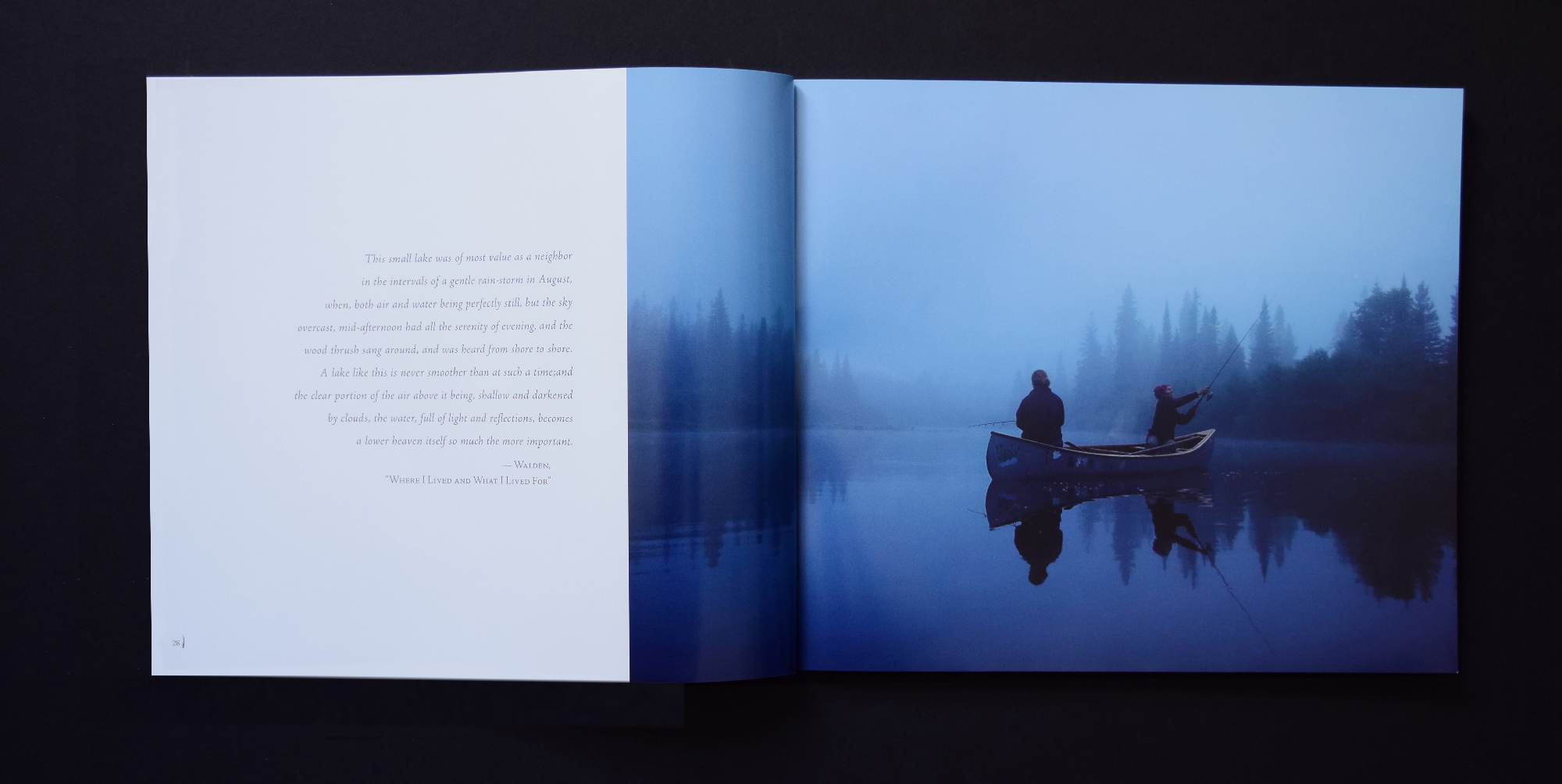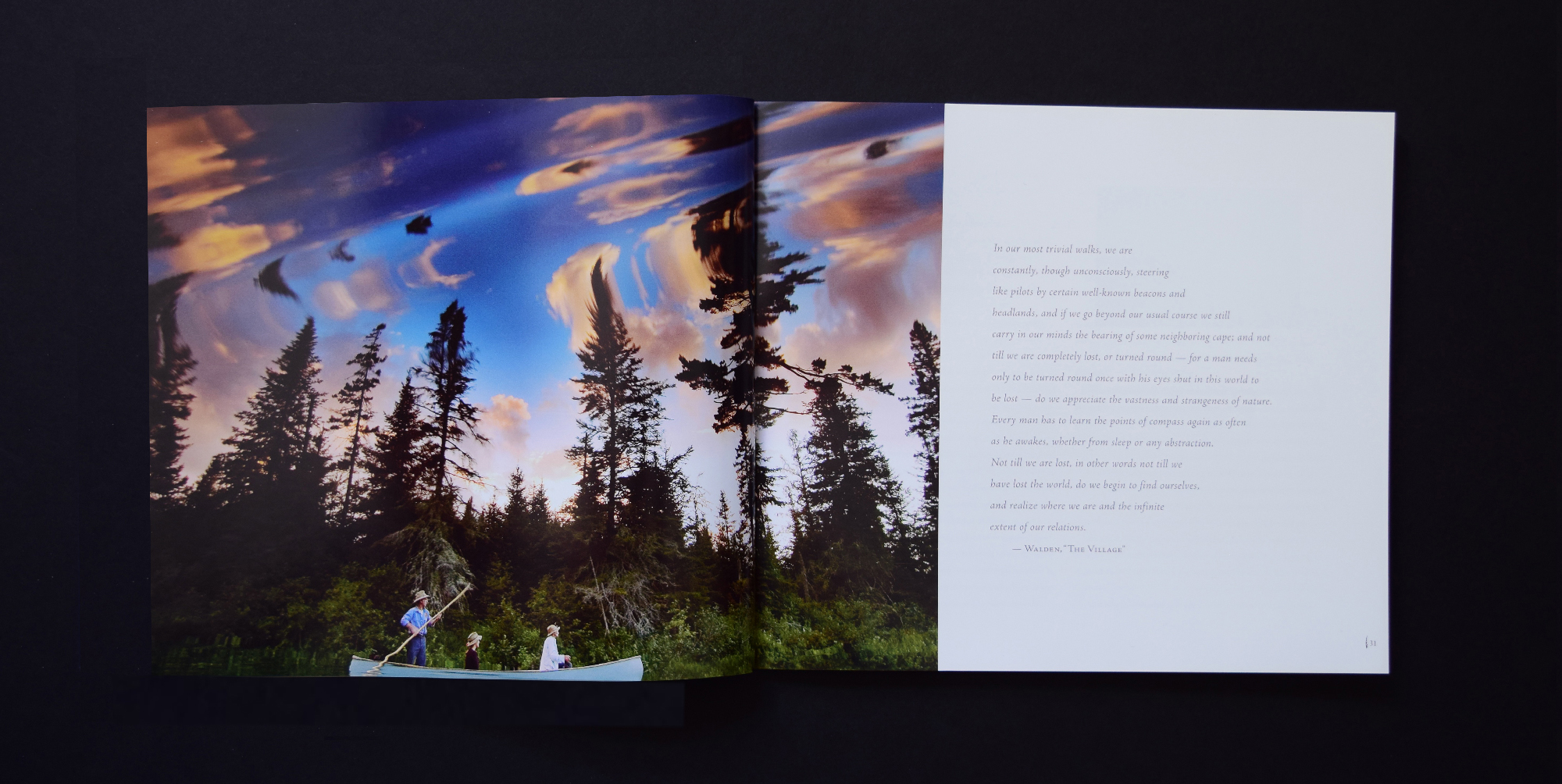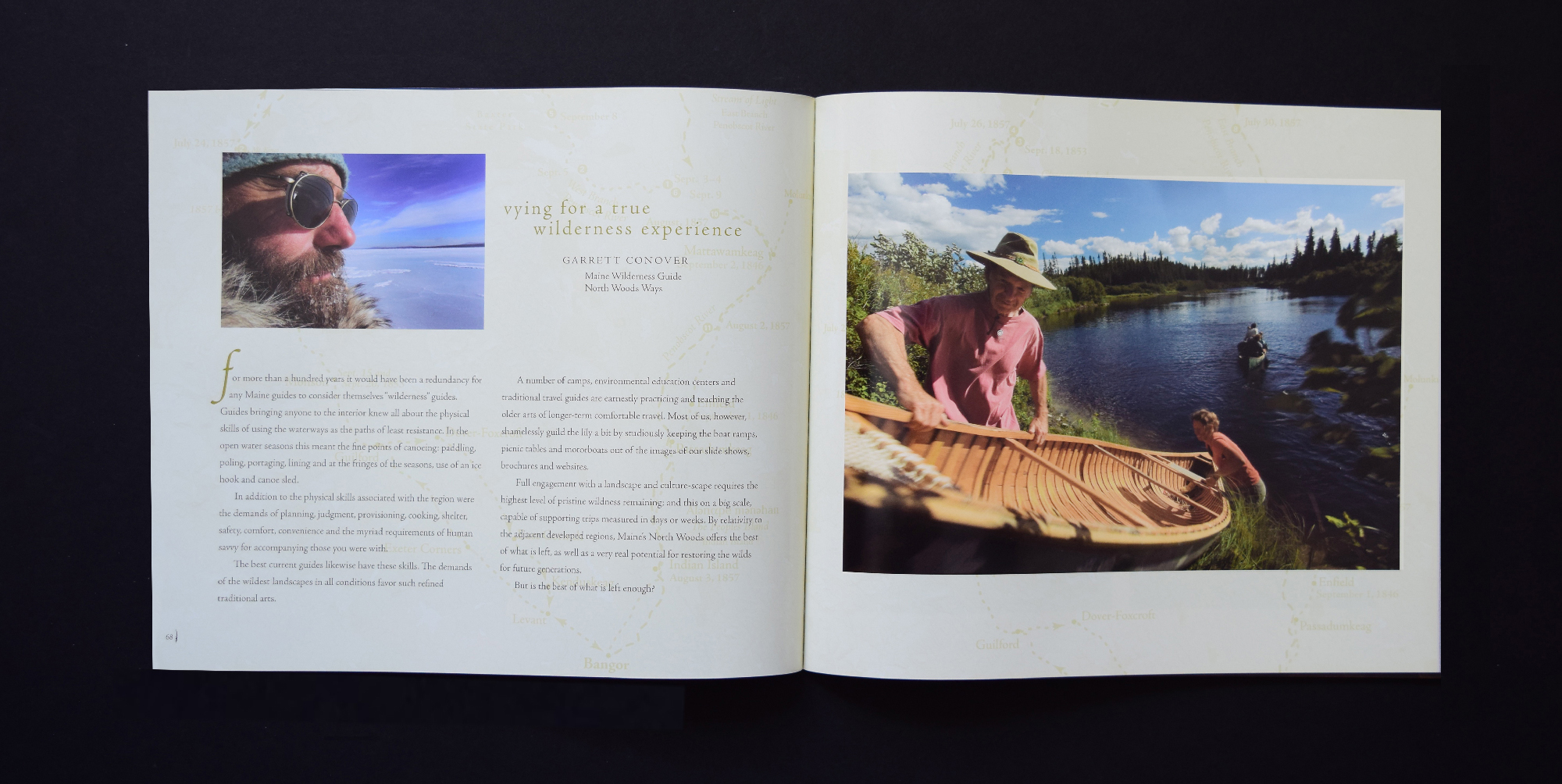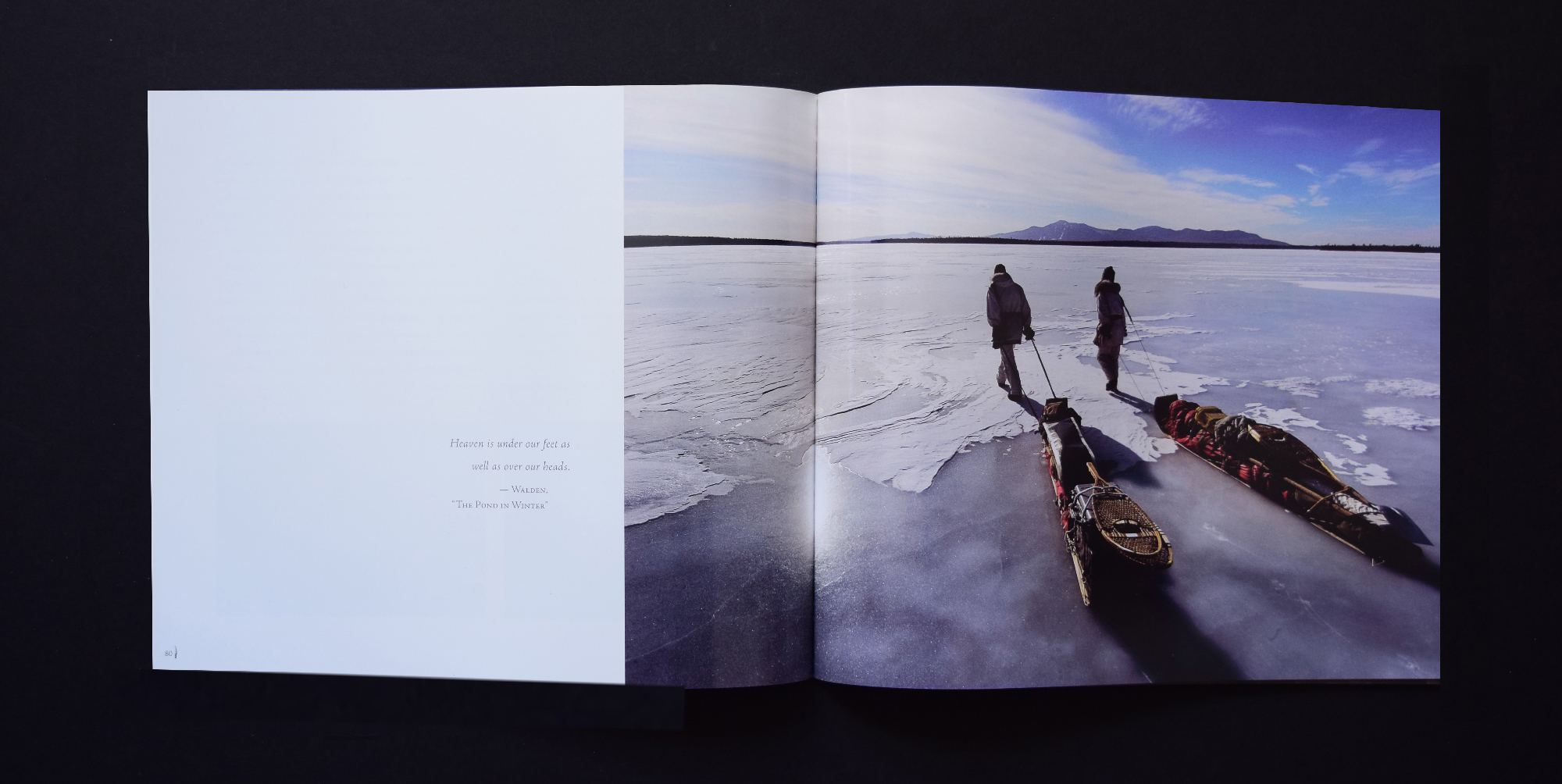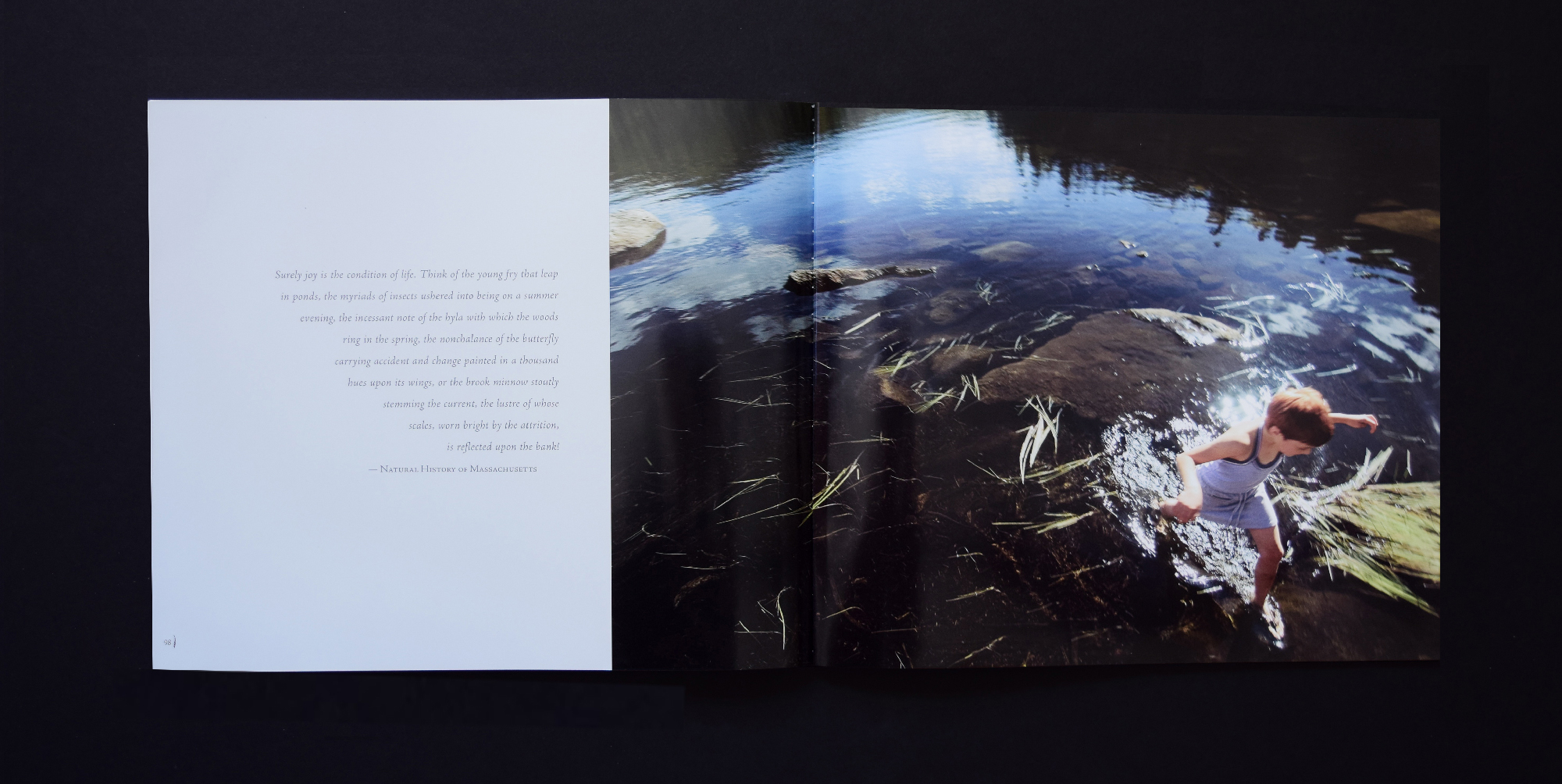Wildness Within
Bridget was commissioned by Maine Woods Forever to create a series of images documenting the various human-powered ways people enjoy the North Woods of Maine.
The goal was to celebrate the wilderness spirit and recreational heritage of the region, and to help raise public interest in the protection of the land and waterways surrounding the trail that Henry David Thoreau traveled 150 years prior with the help of Wabanaki guides.
From this body of images, she produced three outreach tools:
+ Book with foreword by legendary environmental author Bill McKibben.
+ Traveling exhibit that, as of 2010, has been seen in dozens of locations by thousands of people.
+ The Thoreau-Wabanaki Trail website.
SELECTED SPREADS
—
PRESS
—
In the 1850s, Henry David Thoreau set out to explore Maine’s North Woods. But the poet-naturalist was not the first to travel the trails and tributaries of The Pine Tree State. The Wabanaki, meaning “people of the dawn,” used the area’s interconnected waterways for thousands of years before Thoreau gained the heights of Mount Katahdin or paddled the dark waters of the Penobscot. In Wildness Within, Wildness Without, photographer Bridget Besaw pairs images of Maine’s quiet beauty with thoughtful essays by writer conservationists. The foreword by Bill McKibben makes it clear that Maine is at a conservation crossroads—clear-cutting and development are gaining momentum, and the state’s wet, green wilderness hangs in the balance. Perhaps Besaw’s images will not only preserve a moment in time when Maine is still somewhat wild but also encourage others to keep it that way.
—Nature Conservancy Magazine
Bridget Besaw uses her extensive photographic wiles for a sacred purpose: She is out to save the world’s wild and fragile places. All the photos from these pages are from her book Wildness Within Wildness Without, presenting a dazzling case for preserving the Maine lands once traveled by Henry David Thoreau and his Native American guides. Her case is made for preserving and enjoying—for in virtually all of Besaw’s masterful photos in the book, nearly 70 of them, the land and landscape are being savored by people. Besaw shows us that mankind’s footprint does not need to be heavy, and her work inspires stewardship more than these same scenes ever could without their human subjects.
—Bangor Daily News



